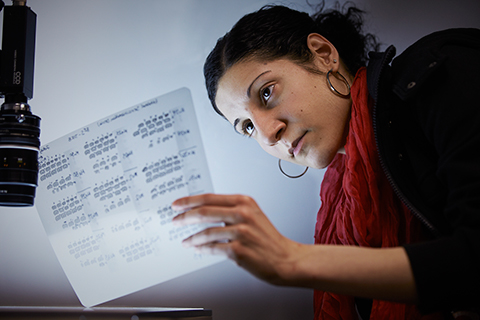Most people have heard of dopamine and serotonin. But there’s another important brain chemical called glutamate that has a huge impact on cognitive function, says Christina Nona, a master’s student in the Faculty of Medicine who is seeking to unlock some of its effects.
Glutamate is present in almost every part of the brain. It’s a key factor in learning, memory and neuroplasticity – the brain’s ability to change in response to experience. It’s also implicated in addiction and other forms of maladaptive learning. But it’s not simply the case that more glutamate is good and less is bad, says Nona. People need some glutamate in order to learn and remember, but in conditions such as Alzheimer’s or drug addiction, the glutamate system gets disrupted. “In some conditions, people actually have too much glutamate – and that is toxic and can kill brain cells,” she notes.
What interests Nona is the way glutamate interacts with two of its key receptors, each of which is made up of smaller proteins called subunits. These subunits come together in different combinations, which “affect the receptor’s response to glutamate, which in turn affects the neuron and how the neuron responds to glutamate. This ultimately affects behaviour,” she explains.
Nona, who recently won an André Hamer Postgraduate Prize worth $10,000 from the Natural Sciences and Engineering Research Council of Canada, is hoping to figure out the role of the subunits and their effect on the receptors as a whole, with the hope of eventually developing better treatments for conditions such as Alzheimer’s and other learning and memory disorders. She plans to start a PhD this summer.
Recent Posts
U of T’s Feminist Sports Club Is Here to Bend the Rules
The group invites non-athletes to try their hand at games like dodgeball and basketball in a fun – and distinctly supportive – atmosphere
From Mental Health Studies to Michelin Guide
U of T Scarborough alum Ambica Jain’s unexpected path to restaurant success
A Blueprint for Global Prosperity
Researchers across U of T are banding together to help the United Nations meet its 17 sustainable development goals






